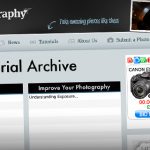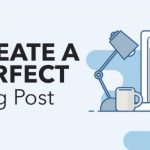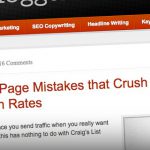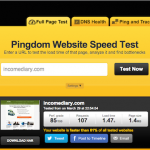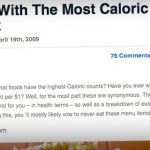
Over the last two weeks, I have increased my blogs page views by as much as 50% – I have been able to do this by doing two things, adding better navigation and directing visitors to the pages that my research has shown to be the most popular.
Any of you who have been following for any time will have noticed major changes in last few weeks – new design, new navigation and also more use of video. I am far from finished with the upgrade – still plenty of pages that need updating, but today I thought I’d just take a little time to highlight what I consider some of the most important pages you need in any blog. (and perhaps changes you need to make)
When considering these most important pages it helps to step into the shoes of your reader and ask what would your reader like to see? What content will assist them most? What content will inspire them to recommend your website?
These things could include:
– Finding out more about the blogger
– Contacting the blogger
– Subscribing to your list / your offer (Opt-in)
– Subscribe to future posts
– Resources that readers need to succeed in your niche
The point is that you need to make sure you give the readers what they want, make life easy for them by putting the links where the expect to see them, in the header, footer and even the sidebar. Also refer back to pages in blog posts and your auto-responder series.
Important:
One point more than any other I could make about Blogging (and indeed business in general) is that the rules are constantly updating and changing. In today’s fast pace Digital World FAST CHANGE is normal – that is why every serious blogger is always looking for ways to improve their Blog on a constant basis. The recent update of this website is just part of an ongoing project – as you will see in future posts I shall continue to test and improve. William Pollard has a great quote about change:
Without change there is no innovation, creativity, or incentive for improvement. Those who initiate change will have a better opportunity to manage the change that is inevitable
Another important point: Not every change you make will work out perfectly, indeed for all the great praise the new design here has received there are already a number of things that have not worked out as I expected. (Watch out for a future post on tracking and testing reference this) The point is to measure the changes and the benefits (or not) that they bring.
Hopefully this post will inspire you to make some changes / improvements to your website – please let me know about your own experiences, both good and bad and what you learned in the comments below.
To our Success
Michael
Blog Pages Every Blog Should Have
1. About Page
One of the most important pages on your blog, if you look at your Google Analytics, you will see that your about page is probably one of the most visit pages. Your readers buy into who you are, if your a nice, genuine and offer great value, people will follow you.
2. My Story Page
I created My Story page because of the above, if people want to find more about me, then I will give it to them. I created a post exactly how I started my internet business and all the troubles I had. You can do the same for your blog, this is also a great opportunity to build social proof and add in some affiliate links.
3. Press Page
Press can be really important for the success of some blogs, the more press write ups, interviews and mentions, the most traffic you will get. Most people who mention you on blog posts and interview you, do it because they want to be mention backed so having a press page is a great opportunity to give back to people who mention you and also get more press in future because people will see you return the favor.
4. Squeeze Page
This is a page you send people to, so that they sign up for your mailing list. Often one of the most important pages on your website because the more people you can get to subscribe to your list, the better the chance of getting your readers to visit your site again and make you more money. Another great benefit of having a squeeze page on your blog is so that readers/fans can direct link to it – if you simply have an optin box on your sidebar, they will just say go find it and sign up – here they can show people exactly where to go. For collecting and sending emails to my readers, I use Aweber – I highly recommended it, probably the best investment for your business.
5. Thank You For Subscribing Page
Once people sign up for your squeeze page, it’s really important to send them to a thank you page to remind them to confirm their email address and give them further information on what they are about to receive.
6. Confirmation Page
When they go to confirm their email address to be on your email list, they will click a link, that link can either take you to a default Aweber thank you or you can send them back to your site and thank them their. This basically gives you another chance to send them back to your site, perhaps download your gift (if your not using an autoresponder) and mention other great posts on your site.
7. Already Subscribed Page
Now that they are subscribed, for any reason at all, they may try to sign up again, here I give them a message, telling them they have subscribed already and here is your free gift. Remember, the free gift will make you money so make it easy for them to find it, if they have lost it. Here you will notice I have a big copy of my eCover to show some perceived value of the FREE course, something proven to increase conversions.
8. Subscriptions Page
If they love what you are offering, they will want to come back – make it easy for them. Having a subscribe page you can let them subscribe via Feedburner Email and RSS. If you have Aweber you can allow them to sign up for your newsletter and for blog post updates. I would also recommend mentioning your social networking links such as Twitter and Facebook .
9. Comparison Page
Often I promote services and company’s, my recommendations are my top picks for my readers to use, however, some readers will also want to look else where for a better deal. This is when the comparison page comes in, here you get to compare you offer to a bunch of other services, they should go for your recommendation, but if they go for a different one, you will still receive a commission for it. You can see one of my comparison page here.
10. Resources Page
So you now have a comparison page, this typically are not your recommendations, just a bunch of different products that readers can compare and then buy. The idea of a resources page is to promote your favorite and highest converting products. I’m slowly working on my Advanced Blogging Resources page, you can see the difference although it’s not finished.
11. Contact Page
For obvious reasons, readers/advertisers/press will want to contact you, make sure you make it easy for them. You want to put the idea into their head, why they should contact you. I also highly recommend you mention other pages such as affiliate login page, FAQ’s, your subscription page and your social networking links.
12. Sitemap/Archive Page
This is required for search engines and usability, firstly for search engines, they must be able to find all your pages, having a Sitemap allows them to crewel your website more easily. When I visit blogs that I have never visited before and I find a couple great posts, all I can think about is finding more and more because it’s benefiting me. Having an archive page makes it easy for new readers to look back over all past posts you have, click here to see ours.
13. Advertise Page
If you do offer advertising on your website, you want an advertising page. Not some typical page like everyone else, but something that helps and answers any questions potential advertisers may have.
14. Favorite Posts Page
Like the first 2 pages, people buy into you and if you think a page is great, they will two. Here you can feature all your favorite and highest converting blog posts.
15. Your Questions Answered/FAQ’s
Often I’m asked the same question, over and over again, having a FAQ’s page is a great way to save time. When people email you the question, simply link to this page, another chance to send them back to your site and make money.
16. 404 Page
So often I find myself on broken pages on other peoples sites and I’m guessing I’m not alone, having a customized 404 page allows you to tell readers what to do next when they do land on a broken page. You can send them to your favorite posts, have a search or perhaps put up something funny.
Other Pages I’m Now Using
Tags Page
This is a new trick I’m using, basically I have sub links under each category, to take people to other pages and posts. One thing I wanted to do is show all the interviews in that category, I didn’t want to have posts in two category’s though. So what I did was I tagged all the posts I wanted with “Interviews With Bloggers” then I linked to the tag page and used that as a sort of category page.
Changing Posts into Pages
Top converting posts, turn into pages, another great read from Yoast. Basically in some cases, having an article as a page will destroy it’s link density so you can’t rank as high in search engines, read more here.
Products and Consulting
Some of you have products, services and offer consulting, showcasing this in a blog page can be very good. One of my favorite examples is Sitepoint and how they sell their products through their website, check that out here.
Affiliates & Support
If you are doing the above, then having affiliates can be a real driving force for your business. They basically sell your products on their websites for a commission. Support comes in handy because it makes things more organized and I’m convinced most people use it because it will decrease the amount of emails and requests from readers and customers as it makes it harder for them.
Earnings Disclaimer
Anyone talking about money and how much they are earning needs one of these, just do they don’t get into trouble. Here is a what mine looks like.
Read more: ’17 Writing Tips For Bloggers Who Think They Can’t Write!’






